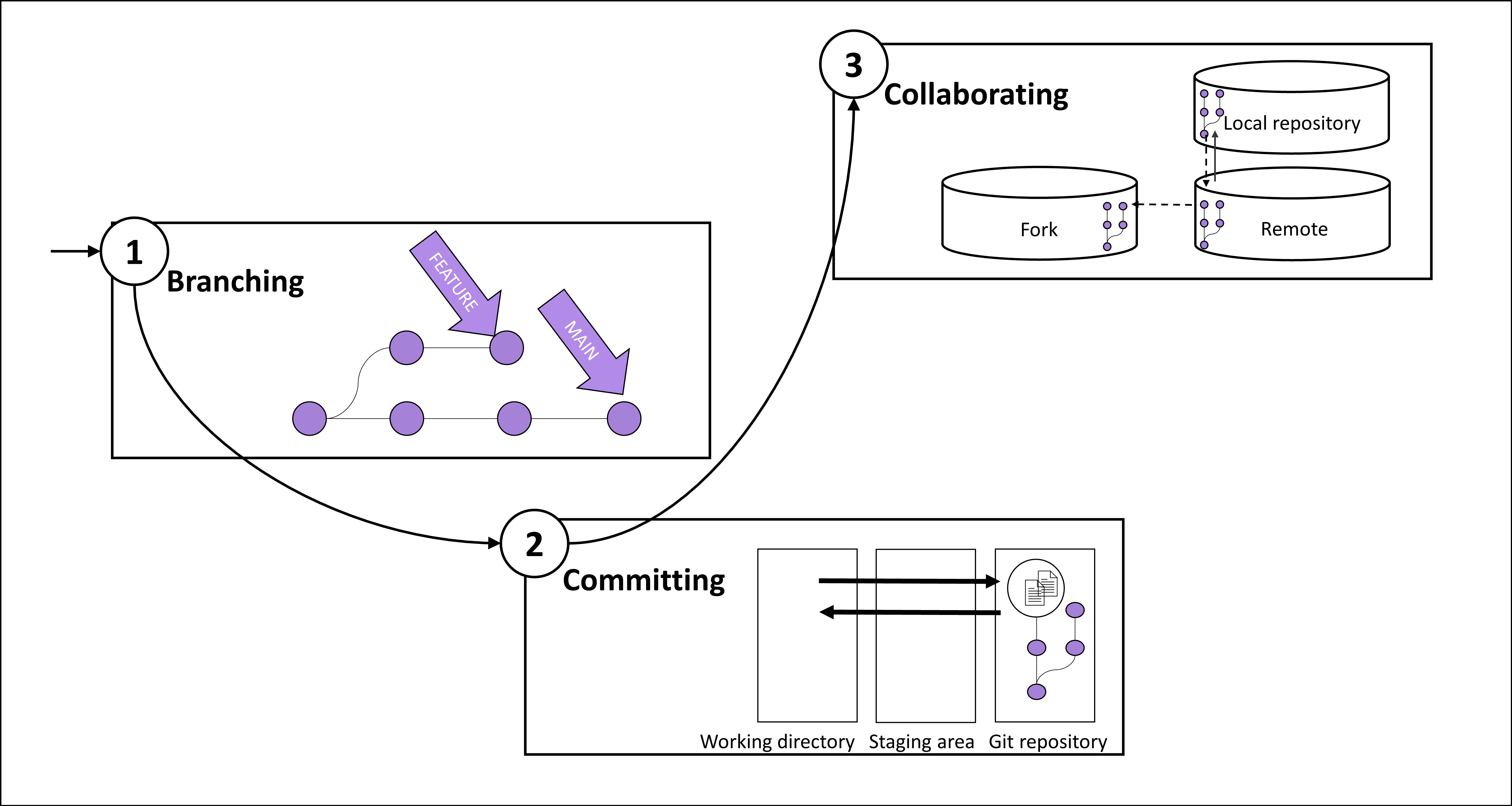Reordering Git areas
In traditional approaches to teaching Git, technical configuration and setup steps may be considered necessary preconditions for starting a Git introduction. However, a well-planned teaching approach, which eliminates technical dependencies can create opportunities to rethink the traditional approach.
We propose to start with branching, which provides students with a high-level understanding of Git's fundamental principles, and supports a better comprehension of subsequent topics like committing and collaborating.

Proceeding from conceptual to interactive learning
The common approach of presenting an array of Git commands in the terminal or on slides requires students to imagine how the Git graph changes, a cognitively challenging task that is negatively affected by attention split effects.
Instead, focusing on key concepts initially reduces cognitive load and minimizes distractions, allowing students to grasp fundamental principles before engaging in practical tasks. In subsequent interactive and group-based settings, students can apply these concepts and help each other.

Transferring knowledge between Git areas
Teachers may refrain from discussing more challenging questions if students are not confident with the fundamental concepts.
When students have a firm grasp of the key concepts, however, starting with the branches and Git graph, brain teasers that stimulate connective thinking between the Git areas, can further enhance understanding.

Cite
Wagner, G. and Thurner, L. (2025) Rethinking How We Teach Git: Recommendations and Practical Strategies for the Information Systems Curriculum. Journal of Information Systems Education, 36(1).
Full Paper
The underlying pedagogical theories, including pedagogical principles and practical strategies are outlined in the full paper.
